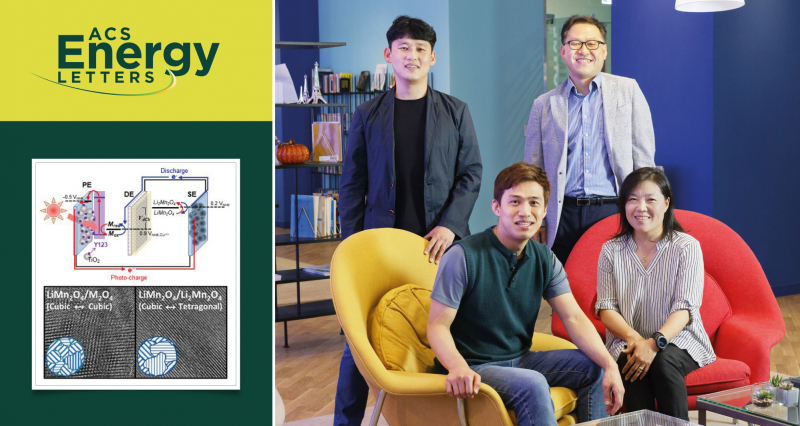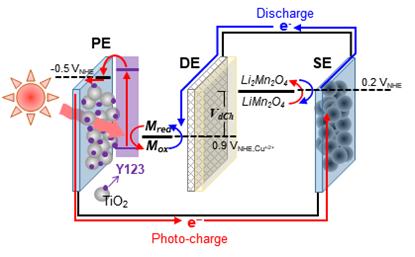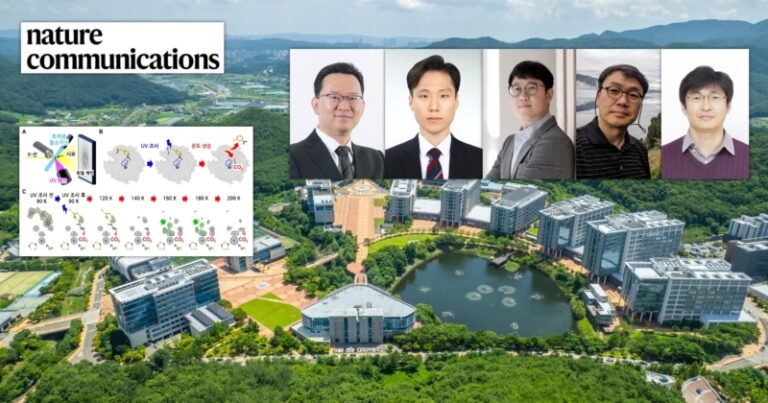A new era for energy recycling, which refers to the energy recovery process of utilizing indoor lights that would usually be wasted by converting them into electricity, will soon unfold. Thanks to the newly-developed electrode material, the charging efficiency was found to be significantly enhanced, even under dim light conditions.
A research team, jointly led by Professor Hyun-Kon Song (School of Energy and Chemical Engineering) and Professor Tae-Hyuk Kwon (Department of Chemistry) at UNIST has recently unveiled a novel battery system, which showed a high overall energy efficiency (ηoverall) of 13.2% under indoor lights. This is by far the highest overall efficiency of photorechargeable batteries (PRBs) ever reported under indoor lights, noted the research team.
Figure 1. Electrochemical crystallite ordering. (Left) High-resolution transmission electron microscopy (HR-TEM) image of LiMn2O4/M2O4. (Right) HR-TEM image of LiMn2O4-to-Li2Mn2O4 (LMO-to-L2MO).
The research team, in their previous work, introduced a PRB known as a dye-sensitized photorechargeable battery (DSPB), which exhibited a high energy conversion and storage efficiency of 11.5% under indoor lighting.
In this new study, researchers investigated the effect of the crystallite size of LMO on DSPB performance. The crystallite size of graphene-wrapped submicrometer-sized LMO (LMO@Gn) was tuned electrochemically from 26 to 34 nm via repeated LMO-to-L2MO transitions. The different crystallite orientations in LMO@Gn particles were ordered in an identical direction by an electric stimulus. The LMO@Gn having a 34 nm crystallite size (L34 and L34*) improved DSPB performances in dim light, compared with the smaller-crystallite LMO@Gn (L26).
Figure 2. DSPB. Legend: PE, photoelectrode; DE, discharge electrode; SE, storage electrode. Shown above is the electron flow between PE and SE during photocharging.
Their findings demonstrate that the overall energy efficiency (ηoverall) of 13.2% was achieved by adopting the fully crystallized and structure-stabilized LMO@Gn (L34*) for DSPB. The phase transition between the cubic and tetragonal forms during the LMO-to-L2MO reaction was suspected to be responsible for the structural ordering, noted the research team.
The research has been featured as the supplementary cover of ACS Energy Letters. It has been supported by the National Research Foundation of Korea (NRF) and Korea Electric Power Corporation (KEPCO).
Journal Reference
Myeong-Hee Lee, Byung-Man Kim, Yeongdae Lee, et al., “Electrochemically Induced Crystallite Alignment of Lithium Manganese Oxide to Improve Lithium Insertion Kinetics for Dye-Sensitized Photorechargeable Batteries,” ACS Energy Letters, (2021).





